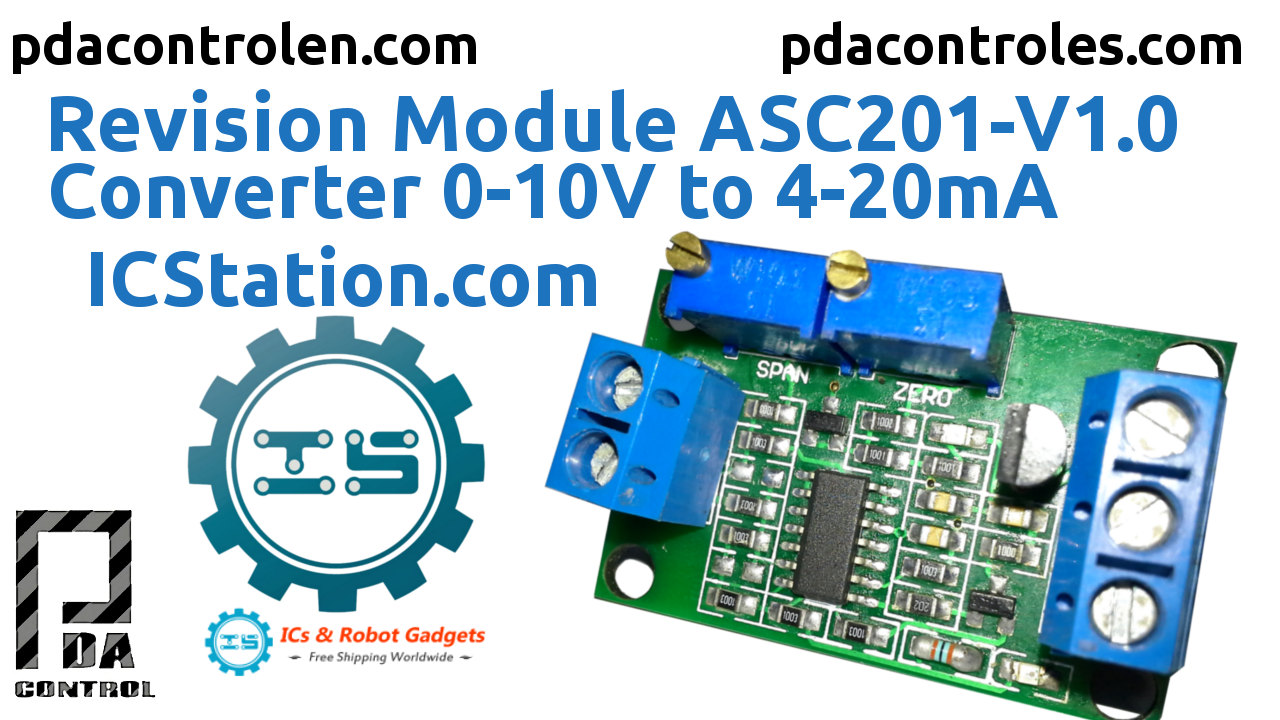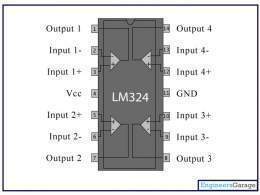At an industrial level there is a great variety of control signals in this case we will carry out tests with one of the most used control and monitoring signals in the industrial 4 to 20mA.
For this first review we will use a PLC Panasonic but in upcoming tests we will test with other platforms such as Arduino, ESP8266 and ESP32.
For our test we will use a module that performs the conversion from 0 to 10 volts to 4 to 20 mA with the module ASC201-V1.0 of Gosling purchased from ICStation Store.

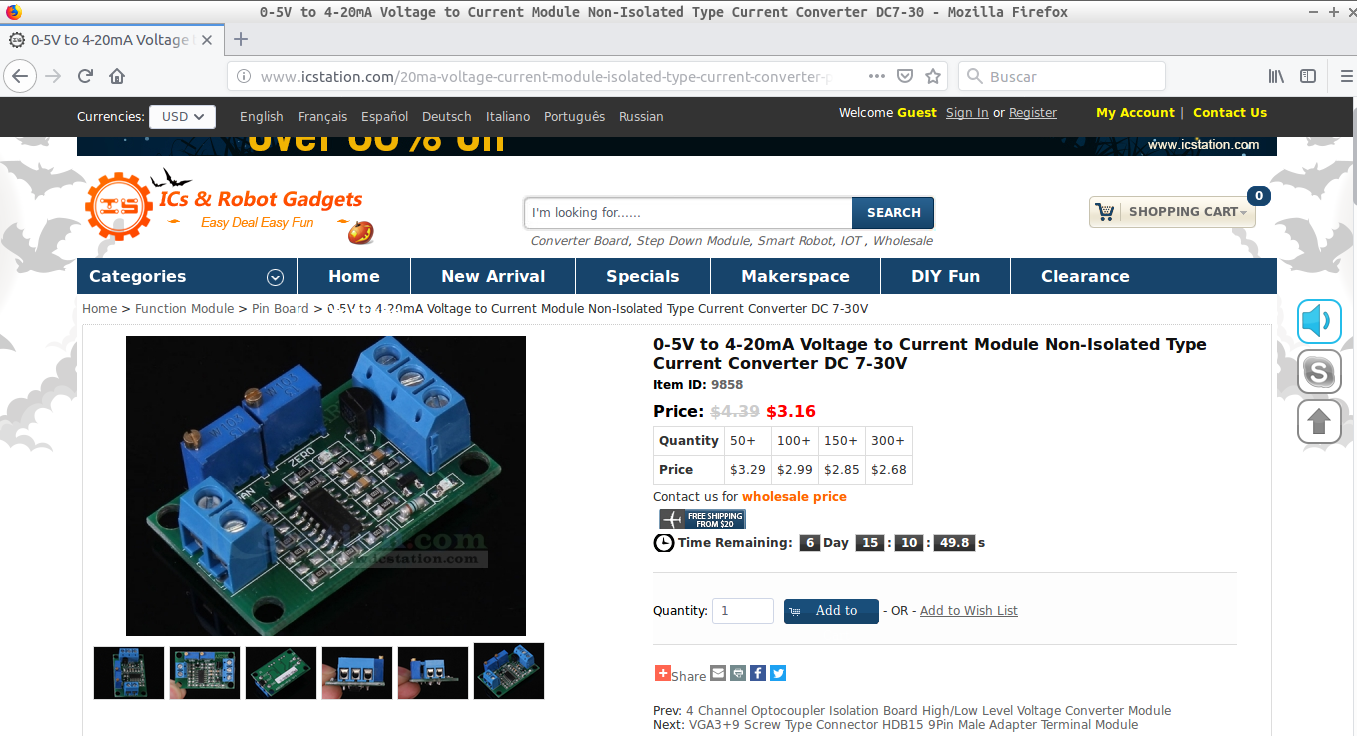
Features
1. Appearance size: 40mm * 25mm * 12mm
2. voltage of the power supply: DC 7-30 V
3. Input voltage: 0-10V
4. Output current: 4-20mA
5. drifting temperature: +/- 100ppm / ℃
6. Ambient temperature: -10 ℃ ~ 60 ℃
7. Storage temperature: -20 ℃ ~ 85 ℃
8. Relative Humidity: 10-90% RH
9. air pressure: 86-106Kpa
10. Diameter of the fixing hole: 3 mm
It has 2 potentiometers for calibration of ZERO and SPAN at outputs 4 to 20mA, in the video we will perform the calibration of the module.
Warning: The ASC201-V1.0 module only converts from voltage to current, not vice versa, nor is it bidirectional.
Front view
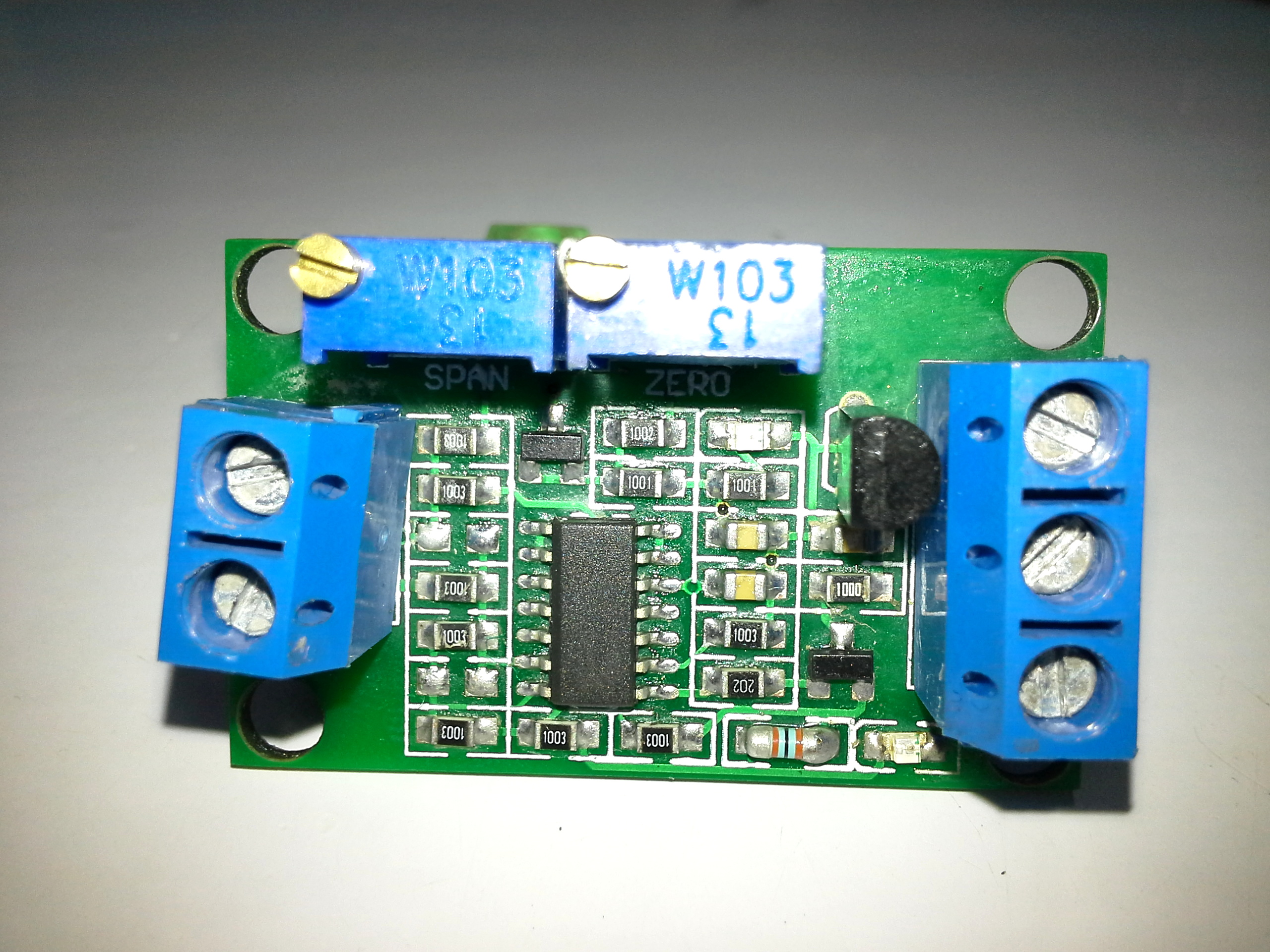
Back view
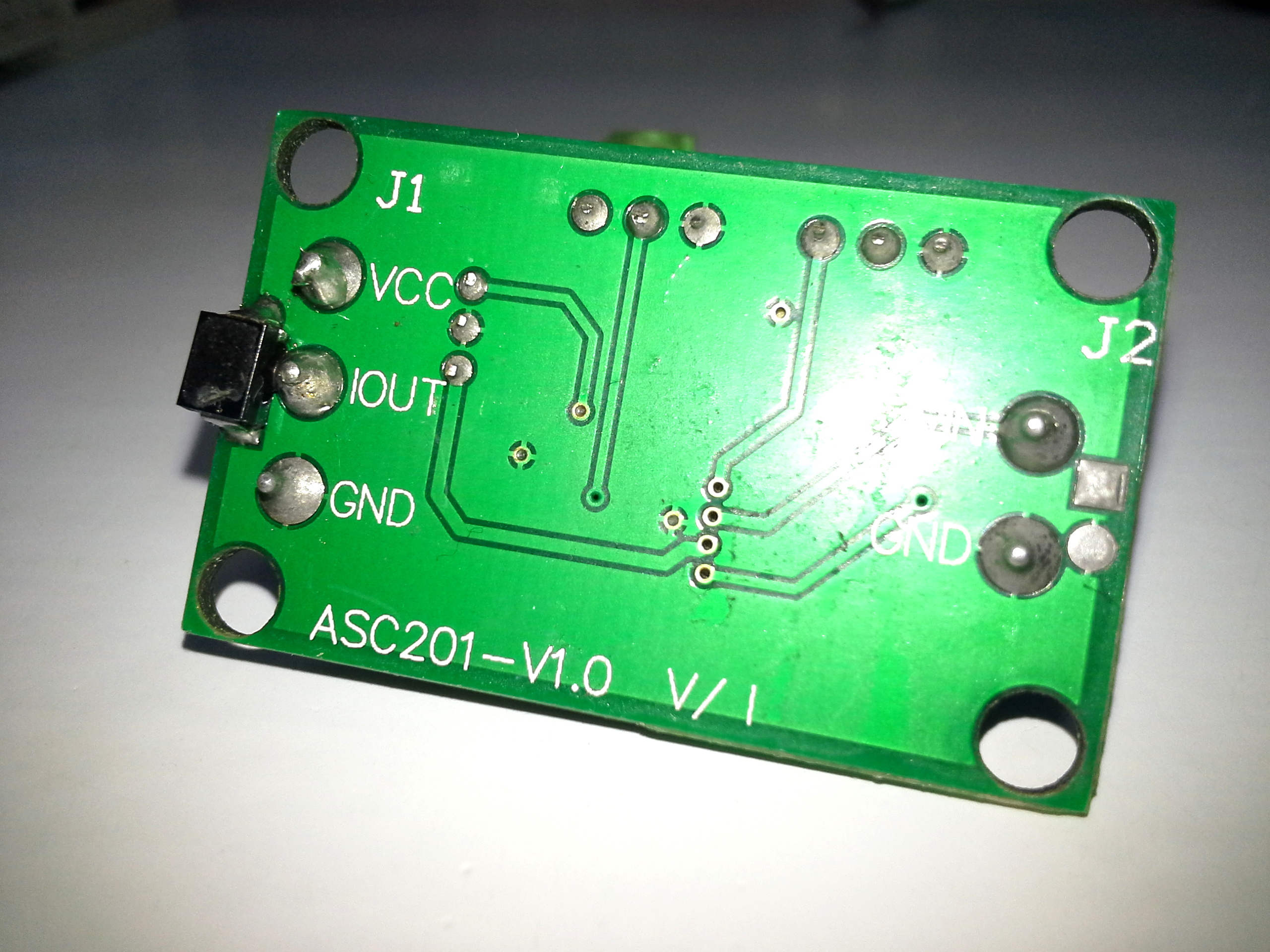
What integrated circuit do you use?
I know that many people are wondering what kind of Integrado performs the conversion 0-10v to 4-20mA, in my module you can not see the integrated reference, but an LM324 integrated circuit is used. Quadruple operational amplifier with differential inputs.
Certificado de Calidad
This small module manufactured by the company GOSLING brings something interesting, a quality certificate.
Indicates the S/N “serial number” of the product which indicates that someone made the review and approval.
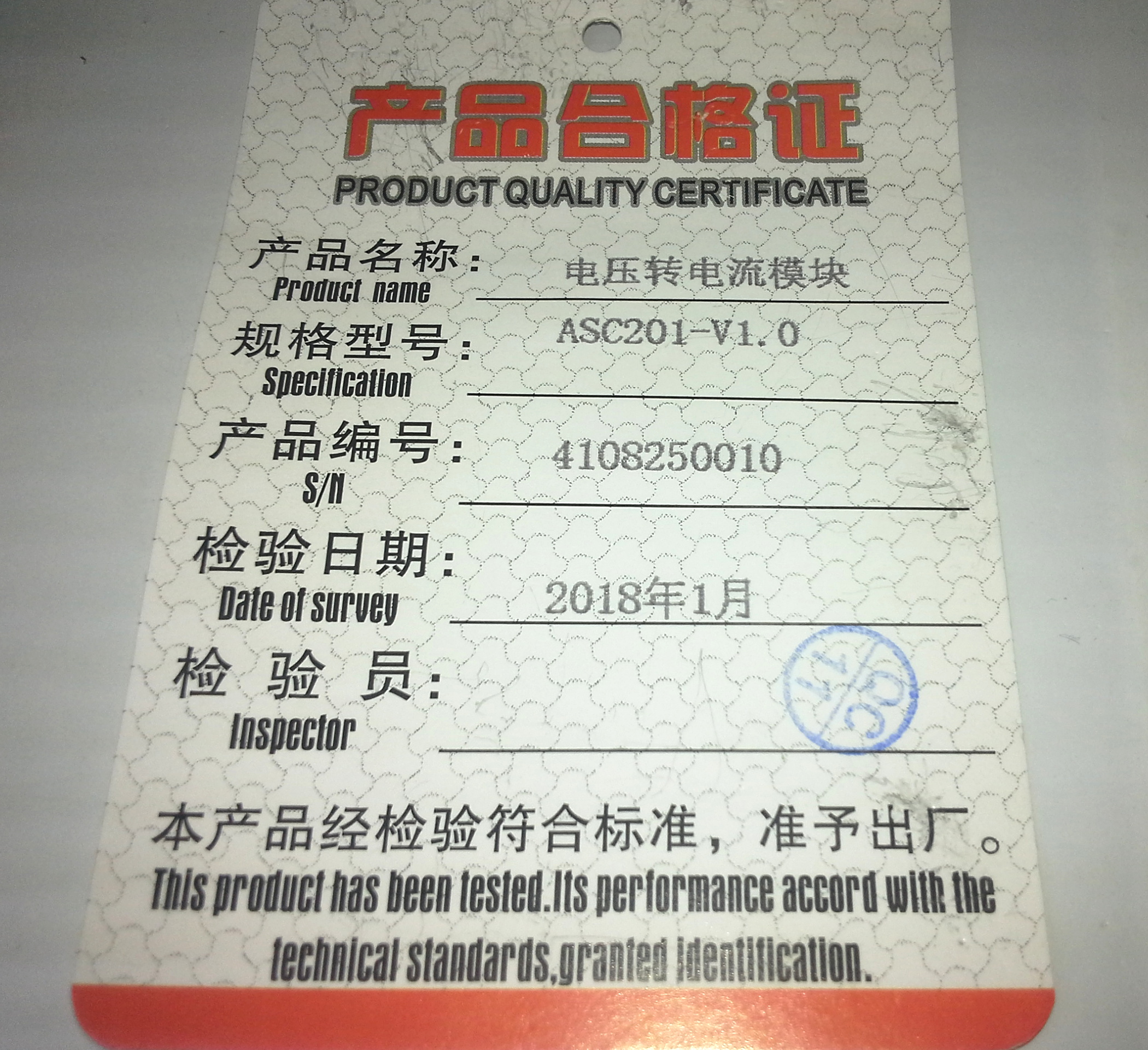
Test
To perform the tests technically we need a device that generates an output in a range of 0 to 10 Volts and another device that allows the measurement of the current output from 4 to 20mA.
The module ASC201-V1.0 requires power supply 7-30 volts in my case I will use a 12v power supply.
To generate 0 to 10v we could use a source and a linear potentiometer, but in this opportunity to give it an industrial character and validate the accuracy of the ASC201-V1.0I will use my Panasonic PLC FPX-C14R with an analog output expansion AFPX- A21, in future tutorials we will use an Arduino UNO, Nano, Mega or an ESP8266, ESP32.
Recommendation: For a more detailed explanation step by step I recommend watching the full video Review Module ACS201-V1.0 0-10V to 4-20mA Converter V/I ICStation.com available on our Youtube Channel PDAControl.
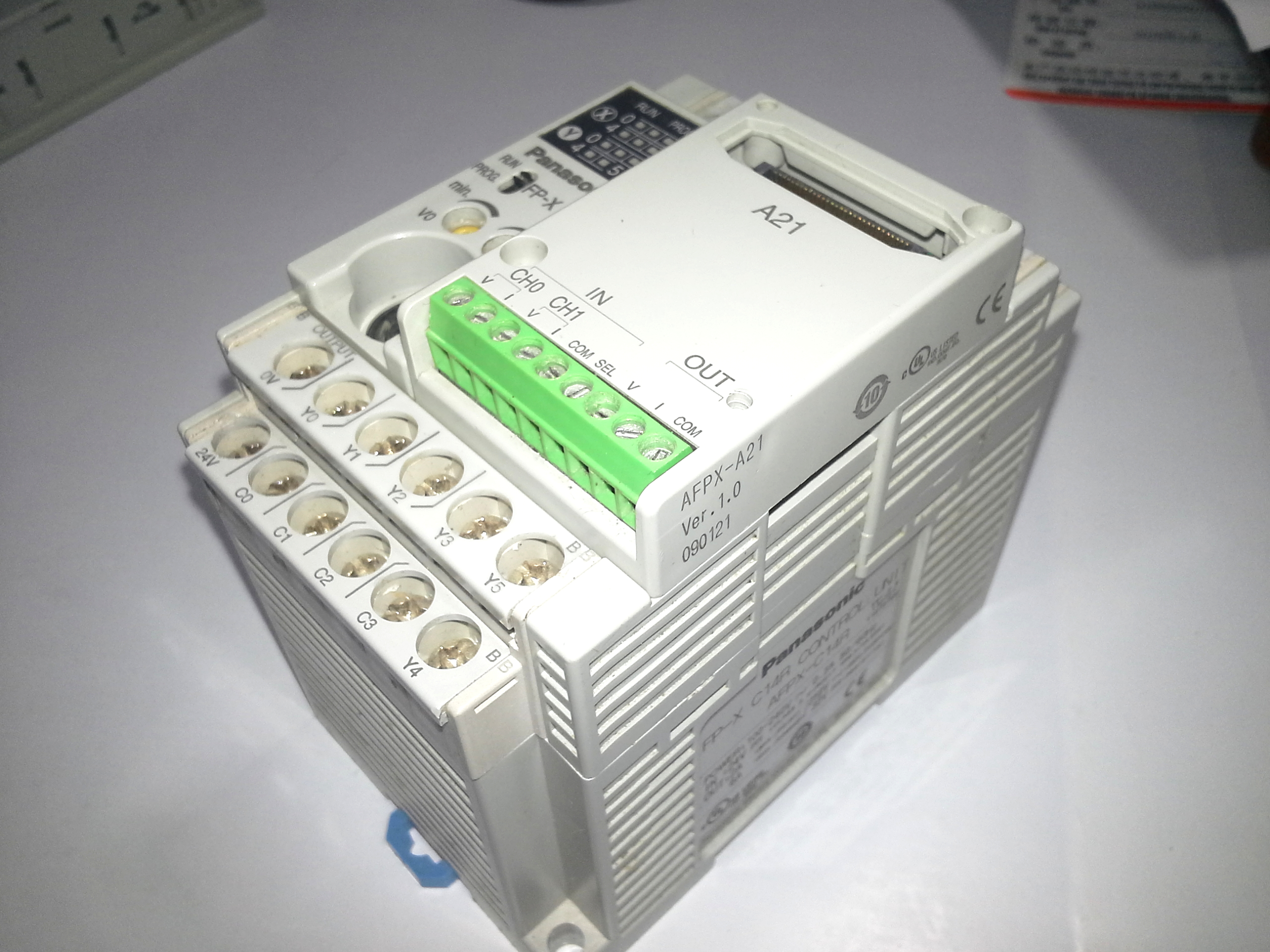
Conexion diagram

Warning: this is a non-isolated type current module.
Materials
1 Module ASC201-V1.0 0-10v to 4-20mA
1 Adapter or power supply 12v, for module ASC201-V1.0
1 Device 0-10v generator, in my case PLC Panasonic FPX-C14R + AFPX-A21.
1 Multimeter for measurements in milliamperes 0 to 20mA.
Connections in tests carried out
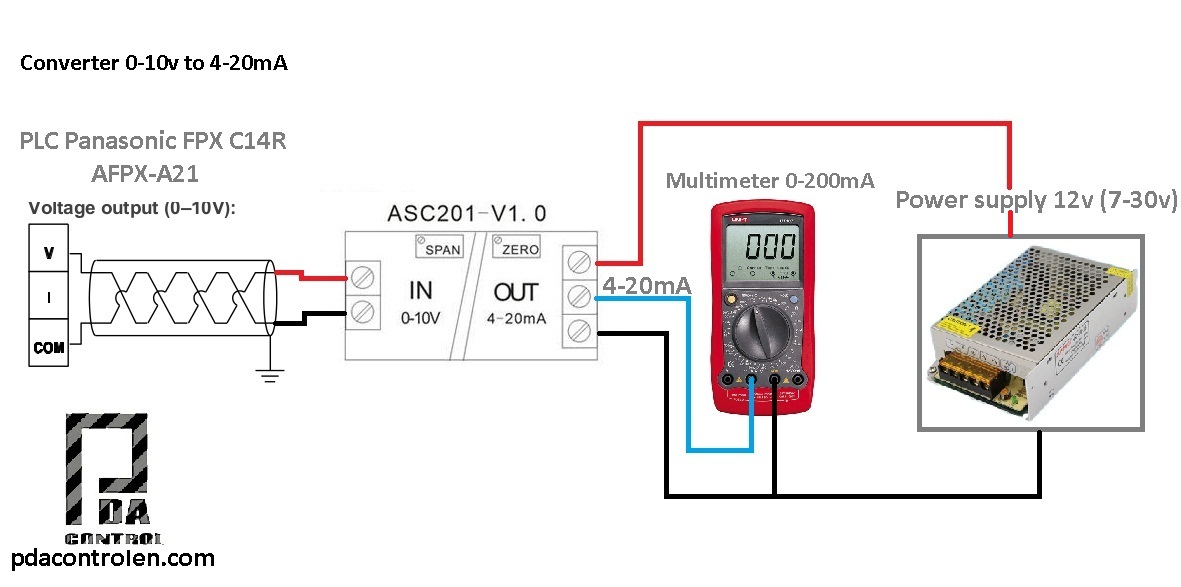
Recommendation: For a more detailed explanation step by step I recommend watching the full video Review Module ACS201-V1.0 0-10V to 4-20mA Converter V/I ICStation.com available on our Youtube Channel PDAControl.
Connected Module
It has 2 led indicators, the upper led indicates that it is on and the lower led only activates when there is something connected to the 4-20mA output.
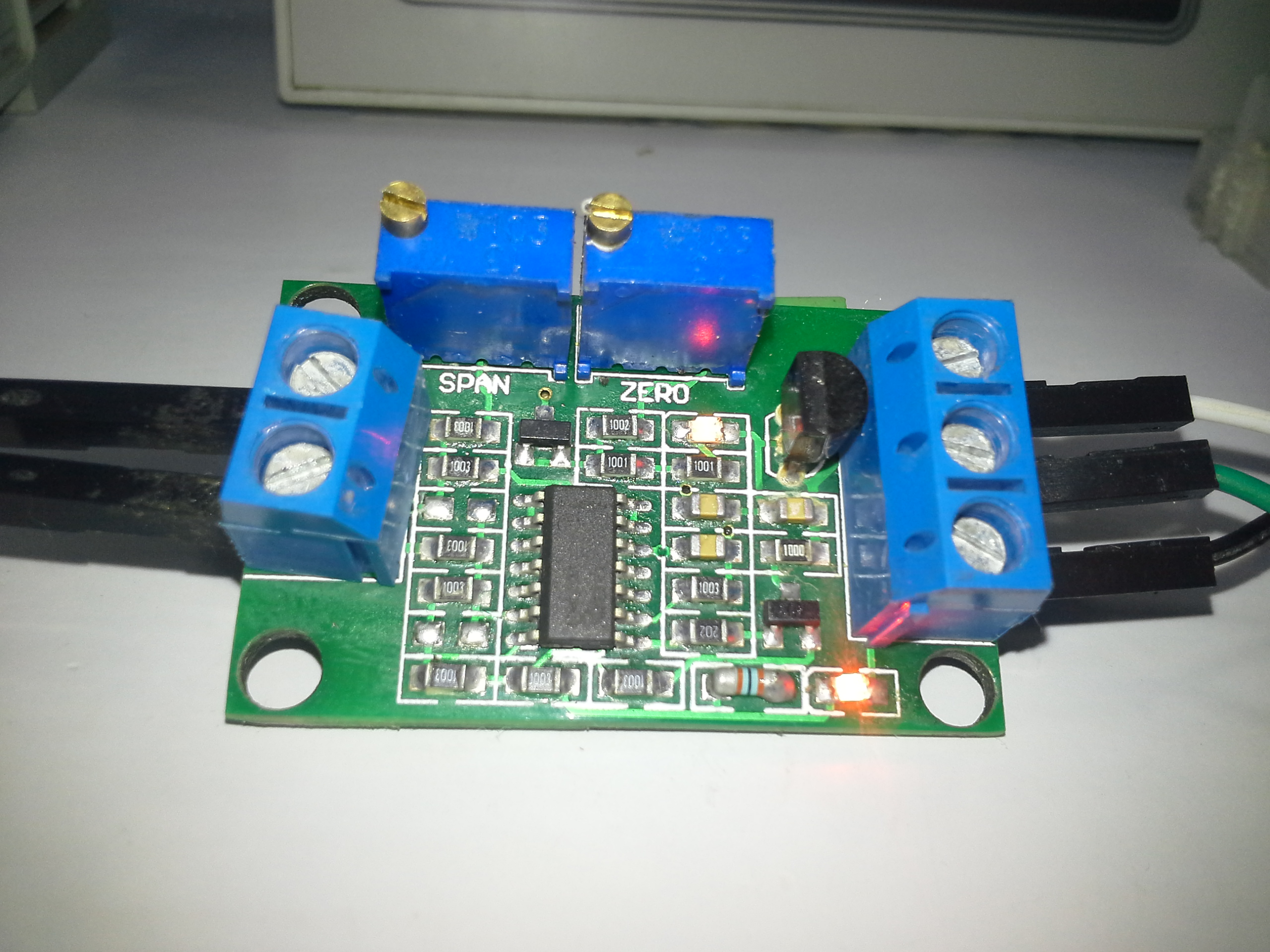
Video: Review Module ACS201-V1.0 0-10V to 4-20mA Converter V/I ICStation.com
Conclusions
It works very well, fortunately I have that PLC which allowed me to make more precise variations in the voltage that were finely displayed in the 4-20mA output.
Since this module has a setting of ZERO and SPAN allows not only make adjustments 0-10v also allows 0-5v to 4-20mA as presented in the video, we need to perform tests 0-2.5v according to some reviews of other sites too it allows it without any problem.
Although I do not have a guarantee or pattern on my measuring equipment, I refer to my UNIT UT107 multimeter, I consider the measurements very valid.
Important 1: The current output of module ASC201-V1.0 should be in reference to GND of the 12v external source, verify in the picture Connections in tests performed.
Important 2: This module is not-Isolated type, there is no isolation between both signals.
I guess many will wonder if this module applies to Industrial applications, my opinion is that although it is not an isolated analog module, in some basic industrial applications it could be given the opportunity.
Based on my experience in the industry, the 4-20mA analogue outputs were generally used for valve positioners, pneumatic or servo-proportional actuators, although I do not have one currently I will investigate if there is any available.
Finally, thanks to ICStation .
